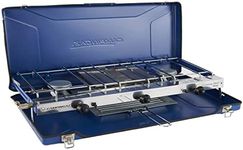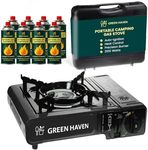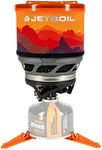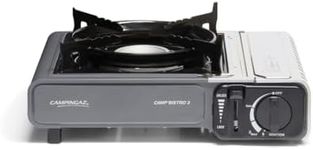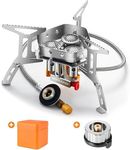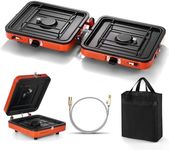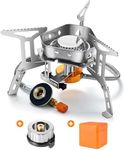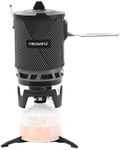Buying Guide for the Best Backpacking Stoves
Choosing the right backpacking stove is crucial for your outdoor adventures, as it can significantly impact your cooking experience in the wilderness. The ideal stove should be lightweight, efficient, and suitable for the type of cooking you plan to do. Consider the environment you'll be in, the type of fuel available, and the number of people you'll be cooking for. Understanding the key specifications will help you make an informed decision that aligns with your backpacking needs.WeightWeight is a critical factor when selecting a backpacking stove because you'll be carrying it along with your other gear. Stoves can range from ultralight models weighing just a few ounces to more robust options that weigh a pound or more. If you're a solo backpacker or prioritize a lightweight pack, opt for a stove on the lighter end of the spectrum. However, if you're cooking for a group or need a stove with more features, a slightly heavier model might be more appropriate.
Fuel TypeThe type of fuel a stove uses affects its performance, availability, and ease of use. Common fuel types include canister fuel, liquid fuel, alcohol, and solid fuel. Canister stoves are convenient and easy to use, making them great for beginners, but they may not perform well in cold temperatures. Liquid fuel stoves are versatile and work well in extreme conditions, but they require more maintenance. Alcohol stoves are lightweight and simple, ideal for minimalist backpackers, while solid fuel stoves are compact and reliable but may have slower cooking times. Choose a fuel type based on the conditions you'll encounter and your cooking preferences.
Boil TimeBoil time refers to how quickly a stove can bring water to a boil, which is important for efficiency and fuel conservation. Faster boil times are beneficial when you need to prepare meals quickly or when you're in cold environments where conserving heat is crucial. Stoves with rapid boil times are often more fuel-efficient, but they may be more expensive. Consider your cooking style and whether speed is a priority when evaluating boil times.
Simmer ControlSimmer control allows you to adjust the flame to cook food at lower temperatures, which is important for preparing more complex meals that require gentle cooking. Not all backpacking stoves offer this feature, so if you plan to do more than just boil water, look for a stove with good simmer control. This feature is particularly useful for those who enjoy cooking a variety of meals and want more versatility in their outdoor kitchen.
StabilityStability refers to how securely the stove sits on the ground and supports your cookware. A stable stove is essential for safety and ease of use, especially when cooking on uneven surfaces. Stoves with a wide base or those that include a separate stand tend to offer better stability. If you plan to cook on rocky or uneven terrain, prioritize a stove with good stability to prevent accidents and ensure a smooth cooking experience.
Wind ResistanceWind resistance is the stove's ability to maintain a steady flame in windy conditions, which is crucial for consistent cooking performance. Some stoves come with built-in windshields or are designed to minimize the impact of wind. If you'll be backpacking in areas prone to windy weather, consider a stove with good wind resistance to ensure efficient cooking and fuel use. This feature can make a significant difference in challenging weather conditions.


